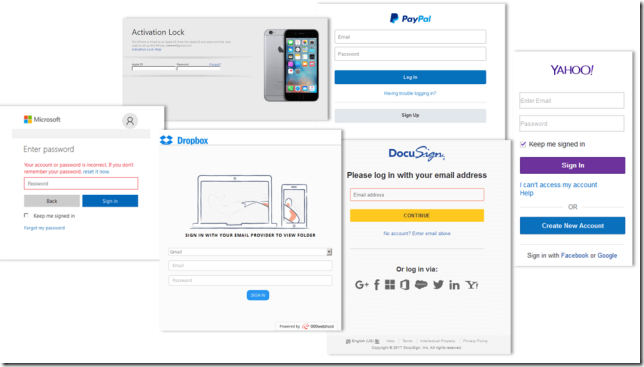f5 labs
26 TopicsF5 Labs Publishes October Update to Sensor Intel Series
F5 Labs just launched the October installment in our growing Sensor Intel Series. The sensors in question come from our data partners Efflux, and allow us to get a sense of what kinds of vulnerabilities attackers are targeting from month to month. In September, the top-targeted vulnerability was CVE-2018-13379, a credential disclosure vulnerability in various versions of two Fortinet SSL VPNs. While nobody likes to see security tools with vulnerabilities, it is a change from the PHP remote code execution and IoT vulnerabilities that have made up the bulk of the targeting traffic over the last several months. We’ve also debuted a new visualization type for all 41 tracked vulnerabilities, making it a little easier to identify vulnerabilities with dramatic changes in targeting volume. At various times in the last nine months, CVE-2017-18368, CVE-2022-22947, and the vulnerabilities CVE-2021-22986 and CVE-2022-1388 (which are indistinguishable without examining headers in the HTTP request) have all shown growth rates at or near three orders of magnitude over a period of six to eight weeks, making them the fastest growing vulnerabilities since we’ve started this project. Stay tuned for the publication of the October SIS in early November. We are always looking for new CVEs to add and new ways to visualize the attack data.1.4KViews2likes0CommentsThe State of the State of Application Exploits in Security Incidents (SoSo Report)
Cybersecurity is always about perspective, and that is doubly true when talking about the rapidly changing field of application security. With The State of the State of Application Exploits in Security Incidents, F5 Labs & Cyentia Institute provide a more complete view of the application security elephant. We examine published industry reports from multiple sources for a better understanding of the frequency and role of application exploits. So, let’s start the clock to learn more about the affectionately named, SoSo Report. Get your copy at F5 Labs788Views0likes0CommentsF5 Labs Report: Cybersecurity Compliance Failures in Financial Services
One important piece of the 2021 Application Protection Report revealed that, of all breaches studied in 2020, the financial sector had the dubious honor of the highest percentage: 17 percent (17%). With breaches, come increased regulatory attention. In 2017, New York’s Department of Financial Services (NYDFS) enacted 23 NYCRR Part 500 regulations, calling out explicit cybersecurity requirements for financial services firms. Since then, three financial services organization that were breached have faced sobering consequences for failing to meet the NYDFS law. This in-depth article looks at each of those breaches in greater detail. Check out Cybersecurity Compliance Failures in Financial Services on F5 Labs.685Views1like0CommentsLightboard Lessons: What is Phishing and how can I guard against it?
Phishing has been around for years, but it is still a very relevant and dangerous attack. These attacks are a major source of profit for cyber criminals, and they can be very difficult to defend. So, why is there so much phishing still going on? The reason is simple: it’s easy and it works. Attackers don’t have to worry about hacking through a firewall, finding a zero-day exploit, deciphering encryption, etc. The hardest part of these attacks is creating a good email to get people to click on, and a fake website for the victims to land on. In this video, we explore the details of phishing and also talk about how you can defend yourself (or your organization) against these attacks. F5 Labs Phishing and Fraud Report (Note: it's a safe link to click on...I promise!!)460Views0likes0CommentsThe F5 Labs 2019 Application Protection Report
For the past years, F5 Labs has produced the Application Protection Research Series. First as individual reports and then as a series of episodes released during the year. We have just released the 2019 report final edition, which places years of security trends and patterns into a single long-term picture, to get away from news cycles and hype that only focus on new threats or vulnerabilities that may not even be applicable. This perspective also allows us to see linkages between the different subdomains and foci that make up the complex and porous field we call information security. This new comprehensive report pulls together the various threats, data sources, and patterns in the previous episodes into a unified line of inquiry that began in early 2019, picking up where the 2018 Application Protection Report left off, and concluded in early 2020 with updated data on 2019 breaches and architectural risk. One of the underlying themes for the 2019 series has been that changes in the ways that we design, build, and deploy applications have been drivers for risk. From third-party services driving the rise of an injection attack known as formjacking, to a growing list of seemingly avoidable API breaches, to the prevalence of platforms running on languages with old and documented flaws, there has been a good deal of goalpost movement for defenders. The implication is that many of the people who are making decisions with significant ramifications for security—system owners, application architects, DevOps teams—are generally placing other priorities ahead of security. Based on the acceleration of trends in 2019 that we identified from 2018, it seems that this tension will characterize the next few years of the security arms race. Our top conclusions in this report include: Access attacks predominant except for retail Retail breaches increasingly dominated by formjacking Breach modes driven more by application architecture than by traditional sector Get the Full report here https://www.f5.com/labs/articles/threat-intelligence/2019-application-protection-report Executive Summary https://www.f5.com/labs/articles/threat-intelligence/application-protection-research-series-executive-summary411Views1like0CommentsThis Month In Security for October, 2022
This Month In Security is a partnership between F5 Security Incident Response Team's AaronJB (Aaron Brailsford), F5 Labs' David Warburton and Tafara Muwandi and F5 DevCentral's AubreyKingF5. This month's news includes some Supply Chain Security, Guidance from CISA and a worrisome UEFI Bootkit.404Views2likes0CommentsF5 Labs 2019 TLS Telemetry Report Summary
Encryption standards are constantly evolving, so it is important to stay up to date with best practices. The 2019 F5 Labs TLS Telemetry Summary Report by David Warburton with additional contributions from Remi Cohen and Debbie Walkowski expands the scope of our research to bring you deeper insights into how encryption on the web is constantly evolving. We look into which ciphers and SSL/TLS versions are being used to secure the Internet’s top websites and, for the first time, examine the use of digital certificates on the web and look at supporting protocols (such as DNS) and application layer headers. On average, almost 86% of all page loads over the web are now encrypted with HTTPS. This is a win for consumer privacy and security, but it’s also posing a problem for those scanning web traffic. In our research we found that 71% of phishing sites in July 2019 were using secure HTTPS connections with valid digital certificates. This means we have to stop training users to “look for the HTTPS at the start of the address” since attackers are using deceptive URLs to emulate secure connections for their phishing and malware sites. Read our report for details and recommendations on how to bolster your HTTPS connections.383Views1like0CommentsF5 Labs 2018 Phishing & Fraud Report
The F5 Labs 2018 Phishing & Fraud Report is out! In this report, the F5 Labs team specifically investigated the rise of phishing and fraud during the 'holiday shopping season,' beginning in October and continuing through January. Fraud and phishing attempts increase 50% right now, from October to January and phishing was the root cause of 48% of the data breaches that F5Labs investigated. It's important to check out the report because it explains how phishing works, how to defend yourself against phishing attacks and the importance of training employees to recognize malicious emails. Some of the crazy stats they found include 93% of phishing domains offered a secure (https) version of the site to appear more legitimate and 68% of malware sites used encryption certificates (https), meaning 68% of Command & Control servers use port 443. The crooks are going through the trouble of getting SSL certificates for their fake, but real looking sites. Take a look at some of these. Do any of these web logins look familiar? How about this one? Or maybe this one? If so then you need to check out the 2018 Phishing and Fraud report from F5 Labs because they were all fake. Attackers are getting so good at creating fake websites that impersonate the real thing, most people can’t tell the difference. One thing is for certain, employee click-through rates on phishing emails drop from 33% to 13% with security awareness training: 33% — 1-5 training events 28% — 6-10 training events 13% — 11 or more training events You can check out the Preview Video here and get your report at https://www.f5.com/labs ps336Views1like0CommentsLightboard Lessons: Exploiting Cellular IoT Gateways
Critical emergency services such as police, fire, and medical manage their fleets with vulnerable cellular IoT devices. “Vulnerable” doesn’t have to mean a vulnerability within the hardware or software, although we suspect that is the case in some makes and models. In this instance, "vulnerable" can mean being susceptible to remote attacks because of weak access control and use of default credentials. An attacker can use these vulnerable device to launch attacks, as we have seen with thingbots like Mirai and Reaper, or they can use that access for nefarious purposes to spy, redirect commands in the case of a fleet taking orders from a remote command, or shut the system off, effectively disabling operations. In this video, John outlines the problem of weak authentication in widely-used cellular gateway devices. Help spread the word, and for the love of all things security, change your default usernames and passwords! Related Resources: F5 Labs Report: Breaking Down the Door to Emergency Services through Cellular IoT Gateways F5 Labs Report: Leveraging Government Transparency to Find Vulnerable Cellular Gateways291Views0likes0CommentsHow Malware Evades Detection
Malware loves encryption since it can sneak around undetected. F5Labs 2018 Phishing & Fraud Report explains how malware tricks users and evades detection. With the cloning of legitimate emails from well-known companies, the quality of phishing emails is improving and fooling more unsuspecting victims. Attackers disguise the malware installed during phishing attacks from traditional traffic inspection devices by phoning home to encrypted sites. Let's light up how evasion happens & get your F5 Labs 2018 Phishing & Fraud Report today. ps277Views0likes0Comments

